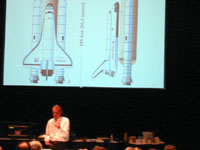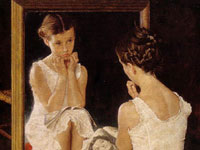 Just back from attending this short course by the master of “intelligent design” himself Edward Tufte. It was well worth the time and effort! I’d recommend it to anyone who prepares or presents information with a computer (ie, just about everyone!). His insights are numerous and often challenge conventional wisdom. His bottom line is to enhance communication by increasing the dimensionality and resolution of data. The course included copies of all four of his major books, highlighting the most recent, Beautiful Evidence. The photo shows his discussion of Powerpoint’s role in the Columbia disaster, which I reviewed in 2005 and is included in Beautiful Evidence.
Just back from attending this short course by the master of “intelligent design” himself Edward Tufte. It was well worth the time and effort! I’d recommend it to anyone who prepares or presents information with a computer (ie, just about everyone!). His insights are numerous and often challenge conventional wisdom. His bottom line is to enhance communication by increasing the dimensionality and resolution of data. The course included copies of all four of his major books, highlighting the most recent, Beautiful Evidence. The photo shows his discussion of Powerpoint’s role in the Columbia disaster, which I reviewed in 2005 and is included in Beautiful Evidence.
Update: Visit my Using PowerPoint Effectively resource page.


